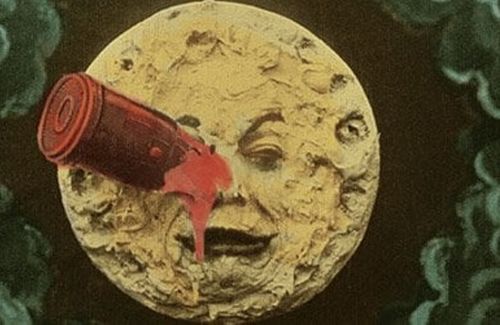What Was The First Color Film?
Nov 01, 2022 · 2 mins read
0
Share

It is widely accepted that the "Wizard of Oz" is the first color film in cinema history. This works perfectly into the lore because of the iconic scene where (B/W) Dorothy opens a door into the colorful Oz. While technically true, there's a common misconception that it was first.
Save
Share
To identify the first color film we will have to go back to the beginning of the 20th century. Early silent films used a technique known as tinting to represent color in cinema. The film stock would be immersed in a dye and colored into a single monochromatic look.

Save
Share
So what was the first documented color film? The first commercially produced film in natural color was "A Visit to the Seaside" (1908). The eight-minute British short film used the Kinemacolor process to capture a series of shots of the Brighton Southern England seafront.
Save
Share
Some filmmakers & innovators, like Georges Méliès, used laborious & expensive methods to introduce color in cinema (known as stenciling) where every frame was hand painted to achieve a specific color effect. "Trip to the Moon" (1902) required an entire assembly line of workers.
Save
Share
"Trip to the Moon" pioneered a color process known as Kinemacolor which opened the doors to future color technology in cinema. The process utilized red & green filters alternating frames to simulate color in the film.

Save
Share
Even though Kinemacolor launched cinema into a new territory, the limitations of the process didn't fully represent the full spectrum of colors. The sole use of red & green filters left some images washed out. The lack of blue left out a range of the color spectrum from images.
Save
Share
In 1914, Technicolor was born & became the primary company that revolutionized color in cinema by experimenting with various techniques that lead to the color theory we know today.
Save
Share
Some techniques Technicolor tried early on was using two projectors to create color through a prism. They also tried to imprint color on film stock, but the process was too costly. Ultimately, these processes came with special equipment for projection that would been expensive.
Save
Share
In 1932, Technicolor developed the dye-transfer method to create the most vibrant colors cinema had ever seen. The first film to use the revolutionary Technicolor process was Disney's short film, "Flowers and Trees".

Save
Share
The first documented feature length, non-documentary film was "The World, the Flesh and the Devil" produced in 1914.
Save
Share
0